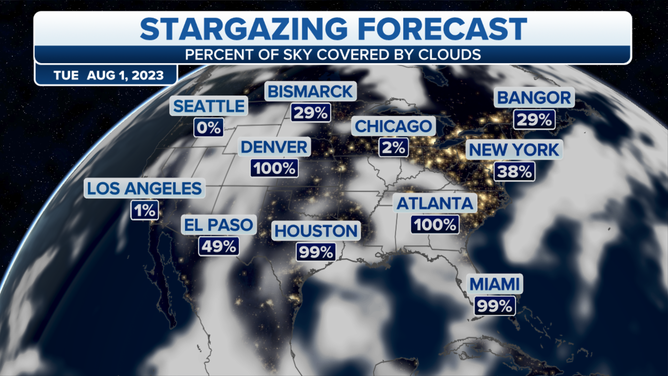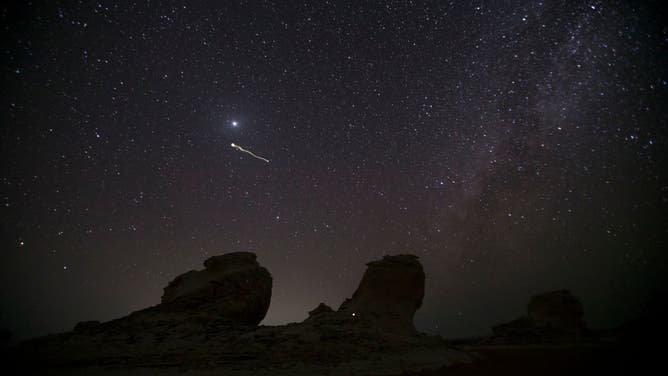August skygazing forecast: Month features 2 Supermoons, Perseid Meteor Shower
A historic heat wave means the best time outdoors might be at night. Two full Moons and the Perseid Meteor Shower will make August a standout month for staring at the stars.
August stargazing: Two supermoons and a meteor shower
August offers a few celestial events to look forward to including two Supermoons and the Perseid meteor shower. The Sturgeon Supermoon happens Aug. 1.
With two Supermoons and the Perseid Meteor Shower on tap, August 2023 will be an excellent month for sky gazing.
During the coast-to-coast heat wave in the U.S., the best time of day to enjoy the outdoors might be at night, which makes stargazing the perfect activity to get some fresh air. Unless you live in Phoenix, where the overnight lows stay in the 90s.
Just don't forget the bug spray before you step out for a night staring at the stars.
Aug. 1: Full Sturgeon Supermoon
Sturgeon Supermoon rises over New York City
Video shows the Sturgeon Supermoon rising over New York City on Aug. 1, 2023. It's the first of two full moons in August. (Video by @dantvusa/Twitter)
There is no wait for the first full Moon of August. It happens Aug. 1 and is also the second Supermoon of the year.
A Supermoon is considered "super" because the Moon will be closest to Earth during this part of its orbit. The effect of the full Moon and the close orbit will make it appear larger and brighter, but only by about 8%, according to the Old Farmer's Almanac.
The August Supermoon is known as the Sturgeon Moon. It's named after the sturgeon fish, which can be more available to anglers in the Great Lakes during the summer months.

Full Sturgeon Supermoon cloud cover forecast for Aug.1.
(FOX Weather)
WATCH OUT FOR THESE ASTRONOMICAL EVENTS IN 2023
The first full Moon of August will be at its fullest at 2:31 p.m. EDT; because of that timing, North America will need to wait for sunset to see the bright full Moon.
Aug. 30: Blue Moon
Thirty days later, the next Supermoon will rise. On Aug. 30, the Blue Supermoon will be at its fullest at 9:36 p.m. EDT.
According to NASA, a Blue Moon refers not to its color but to any month with two full moons in the 29.5-day lunar cycle. A Blue Moon happens about once every three years, and the next time we'll have two full moons in a month happens in 2026.
This will be the brightest Supermoon of the year, according to the Old Farmer's Almanac.
Aug. 15: Perseid Meteor Shower

File photo: A picture taken on August 13, 2021 shows the Perseid meteor shower over the White Desert north of the Farafra Oasis in the New Valley Governorate. Photo: Gehad Hamdy/dpa (Photo by Gehad Hamdy/picture alliance via Getty Images)
(Getty Images)
One of the best meteor showers of the year returns with peak activity in August, making for the perfect end to the summer.
The Perseid meteors are pieces of the comet Swift-Tuttle. When Earth passes the comet each summer, debris from Swift-Tuttle creates the shooting stars seen in the sky.
Last year, there was a full moon during the best nights to view the Perseids. A dark sky is helpful when trying to spot shooting stars. The most active time for the Perseid Meteor Shower happens between Aug. 11 and 13. As the peak happens right before a new moon this year, it will be good to try and watch out for the Perseids.

